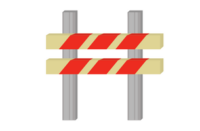Trade-magazine editors are always looking for great projects to cover and they love to hear from contractors who have a story — and great photos — to share. Feeling unworthy to contribute? Don’t! It’s not as hard as you think!
What editors want is a well-written, concise article that discusses how a project was handled and why certain products and techniques were used. Their goal is to educate their readers about new technology, innovative procedures and industry achievements. So, start there and think about your projects. Which one was unusual? What could others learn if you explained the process and products used? Remember what you read about other projects in industry publications. What did you enjoy learning? And don’t forget, editors want good photos of the project! It’s a “must” to have good quality project photos available.
So let’s go through the list — what do you need to know to get your material noticed by an editor?
Here are a few suggestions:
- Make sure you send material appropriate for the magazine’s readers. Research the publication’s website to see who reads it. Would they cover your project? If you’re not sure, send the editor an email to gauge the editor’s interest in your project. If you send an article to a publication that wouldn’t run a problem/solution story in your field, you’re wasting your time and the editor’s. It never hurts to query an editor first to see if there’s interest.
- How does your product or service face an issue head-on to provide a needed solution? Tell the story of how the problem was identified and how it was overcome. Your product or service can be the hero of this narrative.
- Create empathy and relatability by sharing your company’s journey to find that perfect solution. What else was attempted? Who else was brought in to help examine solutions?
- Don’t be afraid to discuss what didn’t work.
- Discuss the lessons learned from this project. Were your customers impressed? Will they be using your product or service on more projects because of the success of this particular project? How does this benefit customers? Be authentic about it.
- Remember, a good story has a beginning, middle and end. What was the project, what were the challenges and how were they solved? If you’re writing about a product or service used for this project, shed light on the inspiration behind the product and how it benefits your audience.
- Be especially careful about punctuation, spelling and sentence structure. Use spelling and grammar checking on your computer. Editors are sensitive to grammatical mistakes and will often reject material that needs time-consuming editing.
- After you’ve written the article on your project, send it out. Your email should start with a short description of the project and include just a few highlights. Attach your article as a Word document. Include complete contact information: contact name and title, company name, address, phone number, email address and web address.
- Attach appropriate photos to illustrate the article and include captions. If you are sending multiple photos or larger files, use a service such as Hightail or Dropbox. This will ensure that the editor receives your images in a convenient and secure method. Some email systems will block emails with large attachments. These services ensure that email is not bounced since the attachments are in a link.
With most magazines being short-staffed these days, most editors appreciate good material that’s ready for publication with little or no editing. Making sure your material is well written and sent properly is a step in the right direction that could lead to publication.
You know how to deliver what is needed for your customers. An editor is just another customer except the “need” is a great article and photos of your project. Follow the guidelines in this article and editors will be asking for more!
















